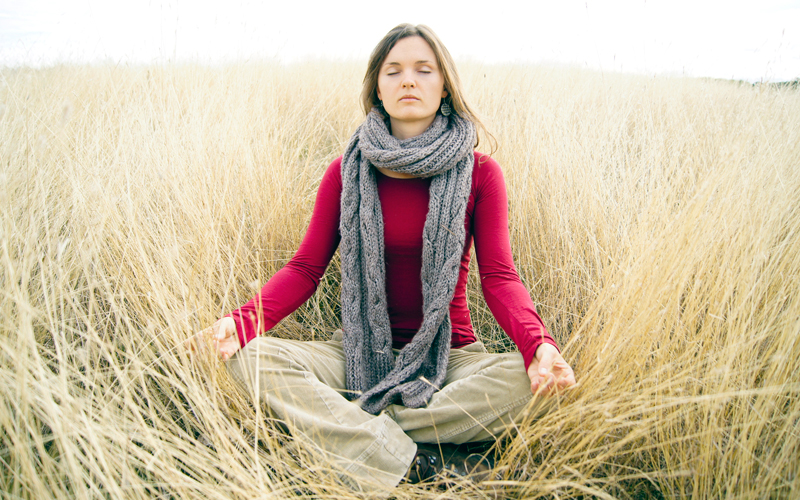
by guest bloggers Jeff Perlman and Holly Walck
This time of year is cold and busy. The temperatures plummet across most of the country, and the holiday season has us on the run, trying to accomplish even more than usual. It’s the perfect storm for an imbalance of the vata dosha in the body and mind.
In Ayurveda, an ancient practice that promotes wellness by living a life of balance, the vata dosha is responsible for all of the movements we make and the thoughts we think. It’s derived from the elements of air and ether (space) and, as a result, has the quality of being cold, dry, light, and mobile. The “seat” (think home base) of the vata dosha is the colon.
If you begin to experience the symptoms of excessive vata, it may manifest as excessive worry, feelings of being overwhelmed or out of control, insomnia, irregular digestion, and/or challenged elimination. To bring the doshas back into balance, try the following:
- Eat foods that are warming, oily, and heavy (try this soup recipe) and sip tea throughout the day.
- Maintain a regular and balanced schedule of work, play, and rest.
- Stay warm by wearing additional layers when going outside, and be sure to include thicker socks, gloves, and a hat.
- Practice yoga that is warming and introspective; holding poses longer with a focused awareness of the breath promotes mental presence, calmness, and connectedness. Be sure to allow time to end your practice with a longer savasana, even if it means that you shorten the time you are practicing active asanas!
The following sequence was created to alleviate the symptoms of excessive vata and assist you in bringing your body and mind into a state of harmony during the chilly weather and hectic holiday season…
A “Warm-and-Cozy Yoga” Sequence
1. Reclining Bound-Angle Pose (Supta Baddha Konasana) surrounded by blankets and enveloped in the breath.
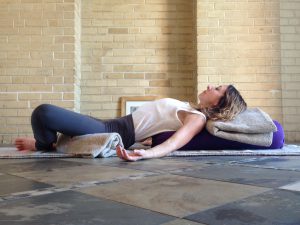
2. Downward-Facing Dog Pose (Adho Mukha Svanasana) supporting your head.
![photo[1]](http://www.mariasfarmcountrykitchen.com/wp-content/uploads/2014/11/photo14-300x225.jpg)
3. Intense Stretch Pose (Uttanasana) with legs wide, holding the ankles. Support your head.
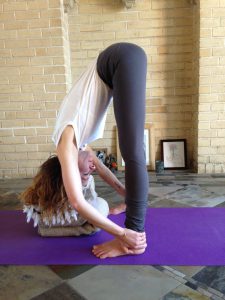
4. Gate Pose (Parighasana) with hand on waist and arms up then overhead.
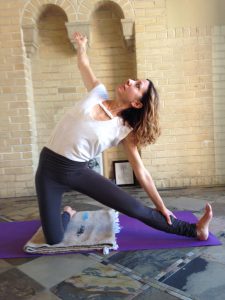
![photo[1]](http://www.mariasfarmcountrykitchen.com/wp-content/uploads/2014/11/photo12-225x300.jpg)
5. Extended Side-Angle Pose (Utthita Parsvakonasana) using a blanket on top of the thigh of the bent leg, let your ribs lie against the blanket.
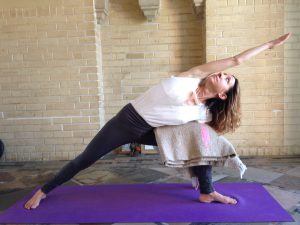
6. Seated Angle Pose, revolved (Upavistha Konasana) turning to each side from the bottom up, coming back to the center from the top down.
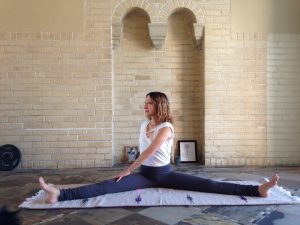
7. Bound Angle Pose, revolved (Baddha Konasana) turning to each side from the bottom up, coming back to the center from the top down. Extend forward with maximum length on both sides of the trunk and the front of the spine.

![photo[1]](http://www.mariasfarmcountrykitchen.com/wp-content/uploads/2014/11/photo11-300x225.jpg)
8. Head-to-Knee Pose (Janu Sirsasana) supporting your head under the forehead if it doesn’t reach the leg.

9. Revolved Head-to-Knee Pose (Parivrtta Janu Sirsasana) supporting yourself under the temples.
10. Bridge Pose (Setu Bandha Sarvangasana) focusing less on height and more on holding the pose for an extended length of time.
![photo[1]](http://www.mariasfarmcountrykitchen.com/wp-content/uploads/2014/11/photo16-300x225.jpg)
11. Corpse Pose (Savasana). Place the soles of your feet on the wall, with blocks packed up against your hips and a bolster on your thighs. Cover your body in blanket
Detailed instructions for the postures in this sequence can be found in Light on Yoga by B.K.S. Iyengar and Yoga: A Gem for Women by Geeta Iyengar.
 Holly Walck uses the healing practices of Ayurveda and Iyengar Yoga to secure her to the core of her being. Her bachelor’s degree in nursing, combined with a certification in Iyengar Yoga, lends her yoga classes a unique flavor and gives her the ability to approach her students from a place of wholeness. www.yogawithholly.com
Holly Walck uses the healing practices of Ayurveda and Iyengar Yoga to secure her to the core of her being. Her bachelor’s degree in nursing, combined with a certification in Iyengar Yoga, lends her yoga classes a unique flavor and gives her the ability to approach her students from a place of wholeness. www.yogawithholly.com
 Jeff Perlman is a clinical Ayurvedic and panchakarma specialist, with advanced accreditation in pulse diagnosis and marma therapy; a professional member of the National Ayurvedic Medical Association; a certified massage therapist; a certified Iyengar Yoga instructor; and a Cordon Bleu chef. Find him online at threeseasonsayurveda.com.
Jeff Perlman is a clinical Ayurvedic and panchakarma specialist, with advanced accreditation in pulse diagnosis and marma therapy; a professional member of the National Ayurvedic Medical Association; a certified massage therapist; a certified Iyengar Yoga instructor; and a Cordon Bleu chef. Find him online at threeseasonsayurveda.com.




No comments yet.